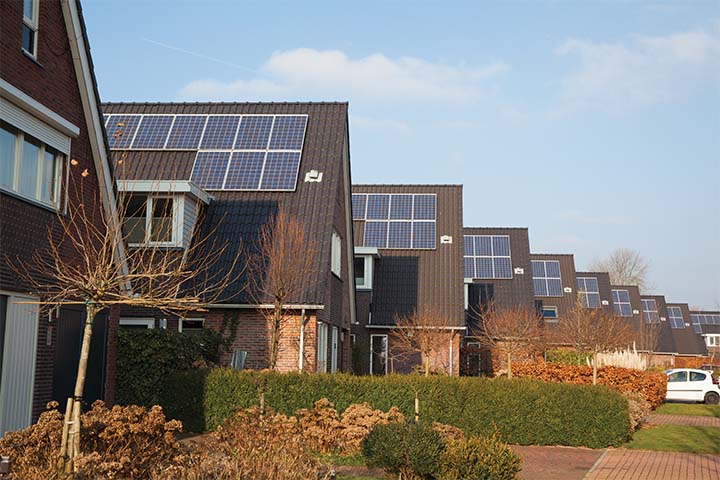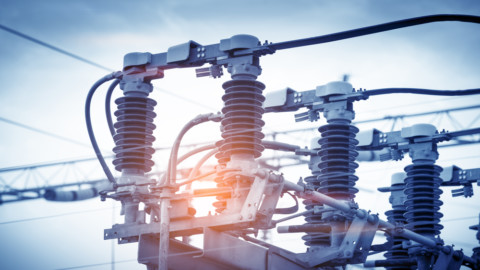Traditionally, solar PV panels have been orientated in a northerly direction, towards the equator. But new research from the University of South Australia questions whether this is the most effective approach, particularly in a residential setting, where north-facing panels will produce the most energy in the middle of the day – outside the usual residential usage peaks.
Over two million Australian households – more than 20 per cent – now have rooftop PV solar panels, and while this is a generally positive scenario, the increased uptake of PV systems around the nation is creating a few challenges for our electricity industry.
UniSA solar researcher, Kirrilie Rowe, said one key problem currently facing home PV stems from the discrepancy between the times of peak use and peak production.
“Solar panels on residential dwellings are typically installed facing the equator to maximise the energy collected, but the power generated by an equator-facing panel peaks at around midday, whereas residential loads typically have peaks in the morning and afternoon,” said Ms Rowe.
At the moment, households are paid a feed-in tariff for excess electricity they send to the grid, but, as the number of homes producing electricity increases, the viability of exporting to the grid is reduced.
“In some markets at certain times we’re already seeing over-supply during peak production times, which can cause grid instability and is leading to reduction in feed-in tariffs,” said Ms Rowe.
“The real challenge now facing the solar industry is finding ways to balance production and consumption by maximising self-consumption for the solar panel owner.”
Offering one elegantly simple solution to this challenge, Ms Rowe’s research explores how rethinking the orientation of rooftop solar panels might better match times of production to patterns of consumption, even if that means a slight reduction in overall energy generation.
“Traditionally, PV panels are mounted facing the equator as this creates more energy per square metre of PV panels, but this orientation does not necessarily maximise the community self-use of the energy prior to the excess being exported to the wider grid,” said Ms Rowe.
“By orienting panels in different directions rather than just facing the equator, it’s possible to minimise the shortfall between load and generation for a community precinct.
“This benefits the end-user by decreasing the amount of electricity required to be imported, and the stability of the grid by decreasing the amount of variability between peak and low loads.”
A recent study by Ms Rowe and Associate Professor Peter Pudney calculated the optimal panel orientation for self-consumption for a community of 29 individual dwellings and a residential building with 42 apartments in Australia.
The individual dwellings form a residential development at Lochiel Park, South Australia, designed by the South Australian Government to be a ‘model green village’, with every house having a minimum 7.5-star NatHERS rating.
The electricity use of each property is recorded every minute, and this data was aggregated to provide 30-minute samples for Ms Rowe and Associate Professor Pudney’s research, with data from two separate years (2015 and 2017) compared.
The apartment data for the research came from an inner northern suburb of Adelaide, the location of the state’s first higher density urban infill project.
All buildings meet 5-star Green Star As Built standards, a sustainability rating system launched in 2003. Hourly energy use data from a block of 42 apartments was used, from years 2016 and 2017.
Neither the individual nor apartment dwellings are organised as embedded networks, but the load data was aggregated as if they were.
“Our analysis uses detailed load data and detailed irradiance data, and shows that optimal panel placement for self-consumption is only towards the equator when the area of PV panels is small,” said Ms Rowe.
“In all cases, if the panel area is small enough so that the household will not export, then facing the panel north is best.
But as panel area increases, it becomes better to face the panels north-west to meet the afternoon loads, and if even more panel area is available, then panels should be faced north-east and west.”
By placing panels more north-east and north-west, the load in the middle of the day was still met, but a greater proportion of the morning and afternoon load was also addressed.
For precincts made up of either the individual dwellings or the apartments, panels oriented north gave the greatest initial reduction in the shortfall between generation and load when PV area was below around seven square metres per dwelling, which currently equates to around a 1.4kW array.
For total panel areas beyond this size, panels were never oriented north. Over the next few years, as solar uptake increases, feed-in tariffs fall and the cost of solar batteries remains prohibitive, the real value of solar self -consumption will continue to rise.
Initially, government subsidies such as generous feed-in tariffs were required to encourage the uptake of rooftop solar, but these subsidies are now decreasing or disappearing altogether.
However, Ms Rowe believes that, as feed-in tariffs diminish, rooftop solar can remain cost effective as long as the local generation is self-consumed.
“Future electricity tariffs are likely to be structured to try to limit electricity use during periods of high demand and encourage use during periods of low demand, by imposing high import costs during periods of high demand and low import costs during periods of low demand,” said Ms Rowe.
“Where feed-in prices are still available, export prices are usually significantly lower than import costs. Orienting photovoltaic panels to best match the load results in less energy imported from the grid during the morning and afternoon peak demand periods, which generally will result in a more cost-effective renewable energy system than if panels were placed north.”
Long-term growth in energy demand from the grid, or increases in peak power demand from the grid, may also increase the price of grid electricity due to the necessity for grid augmentation.
Structuring residential communities such that they slow the rate of increase in peak power demand will also tend to lower the cost of electricity over the longer term.
The strategy developed by Ms Rowe and Associate Professor Pudney offers a simple approach to improving self-consumption in precincts without increasing set-up costs on new PV systems, and the method could also be easily adopted for remodelling existing systems.
“The information on how to orient solar panels to minimise power shortfall is useful to groups developing housing precincts, and has been used to design a renewable energy system for a retirement village with 24 dwellings,” said Ms Rowe.
“Future work will incorporate energy storage into the model,” she added.



















East And West panels in southern areas in winter only have sun between 10am and 2-30 which makes for very short working day